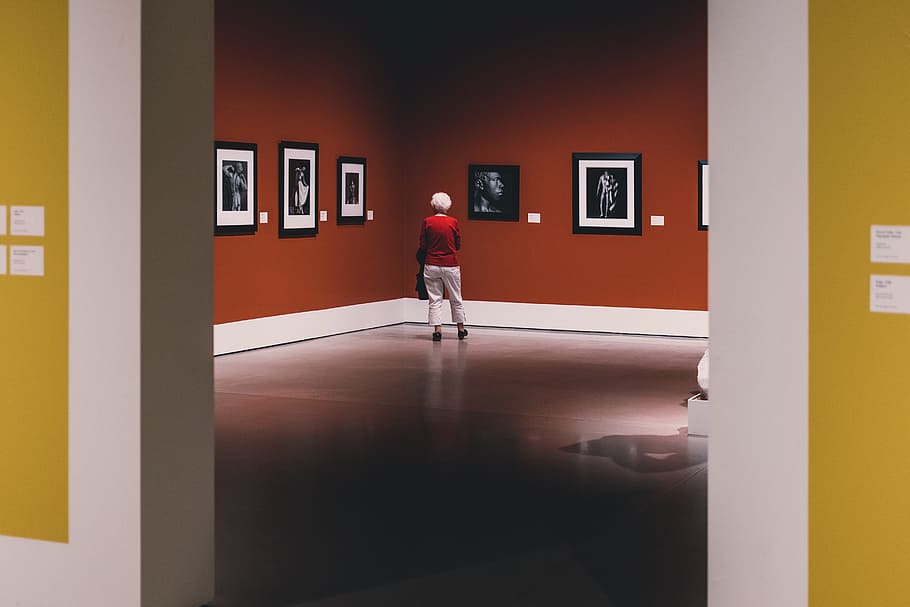Whose Pictures Hang in Your Gallery?

When I was a child, a handful of TV commercials captured my attention. Many of those jingles still linger in my memory. Try filling in the blanks below to see if you know three of the products.
“________ Bread builds strong bodies twelve ways.” “Can’t get enough of Super ________ ________.” “What kind of kids eat ________ ________? Fat kids, skinny kids, kids who climb on rocks. Tough kids, sissy kids, even kids with chickenpox.” I was one of those types of kids.
The products that grabbed my imagination and became part of my childhood diet were Wonder Bread, Super Sugar Crisp, and Armour Hotdogs. I eventually got enough of Super Sugar Crisp (a super-sweetened version of puffed wheat, later renamed Golden Crisp). By the way, I was a skinny kid.
Framing Indelible Word Pictures
G. K. Chesterton said, “Imagination demands an image.”
A well-phrased line from a song or a vivid scene from a book can loiter in our minds for decades. They aren’t just words; they’re skillful combinations of words that our imaginations cast into lasting images.
Do any of the following Biblical images hang in the gallery of your mind?
- Noah’s family stepping from the ark with a rainbow in the sky.
- Lot’s family fleeing Sodom as fire and brimstone rain on the city.
- Moses raising his staff Heavenward while the Red Sea divides.
- Daniel standing unscathed in a den of closed-mouth lions.
Those Old Testament images stick in our minds as Holy Spirit-crafted scenes. The Holy Spirit moved upon the imaginations of the Biblical scribes (II Peter 1:21) to capture our imaginations.
Television commercials, songs, fictional stories, and Holy writ can each exceed the longevity of a political filibuster because they create images that remain on the walls of our minds. Of course, there are images we shouldn’t frame. Some pictures shouldn’t hang in our mind’s gallery.
The Last Supper or Surrealism?
Every mental image begins as a single paint stroke. Any sight or sound can initiate it. Our imagination builds on the thought. It gains color, perspective, atmosphere.
A Christian’s imagination should exalt God. The New King James Bible uses the word “meditate” 13 times. The first is Psalm 1:2–“But his delight is in the law of the Lord, And in His law, he meditates day and night.” Biblical meditation portrays God in our minds in a way as vivid as Di Vinci’s detailed The Last Supper.
Without recharging our imaginations with God’s word and meditating on His goodness, our minds can go astray. We welcome thoughts that we shouldn’t into our oyster-like mind. A wrong thought stays too long. The result is not a pearl. What emerges looks out of sync, like a surrealist Salvador Dali painting.
David refused to look at anything “vile or vulgar” (Psalm 101:3). The Apostle Paul cautioned about whose pictures we allow to hang in our galleries: “And now, dear brothers and sisters, one final thing. Fix your thoughts on what is true, and honorable, and right, and pure, and lovely, and admirable. Think about things that are excellent and worthy of praise” (Philippians 4:8, NLT).
The Road Ahead:
- Songwriter Michael Card has painted scriptural word pictures (El Shaddai, etc.) for nearly 40 years. He wisely says, “To harness the imagination, or better yet, to bring it under submission to Christ is something about which we don’t talk or pray or do enough.” Make submitting your imagination to God a matter of prayer. Talk with others about the images we hang in our minds.
- C. S. Lewis said that reading the stories of George McDonald “baptized” his imagination. Reading the Bible and meditating on God—the divine painter—baptizes or sanctifies our imaginations. Use those brushstrokes more purposefully so that God’s masterpieces rather than ungodly images hang in your mind’s gallery.
Further Fuel: Psalm 119:15; Romans 12:2; I Peter 1:13.